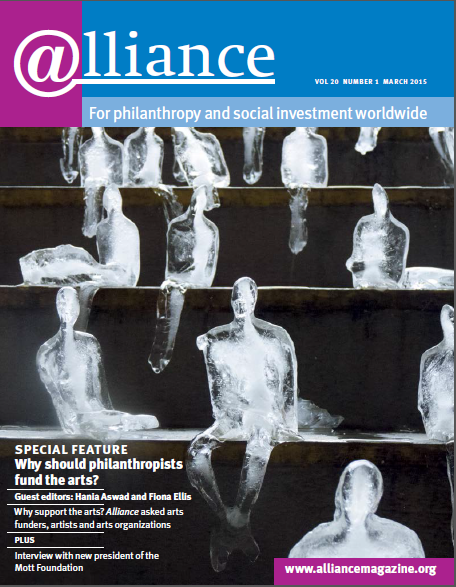Responses to Michele Fugiel Gartner and Daniel Overall, ‘The trouble with transformation creep’
‘Whether interventions come through the lens of philanthropy, humanitarianism or economic development, we risk losing much by judging all social initiatives against the standard of transformation.’
Is a fixation with funding ‘transformative change’ sweeping through philanthropy, leading funders to undervalue smaller-bore efforts to solve problems? It might look that way if you run in a certain fast crowd of philanthropists who act like tech innovators or venture capitalists, seeking out the most cutting-edge groups in the non-profit sector.
Michele Fugiel Gartner and Daniel Overall are definitely part of that crowd as executives of the Alberta-based Trico Charitable Foundation, which aims to ‘leverage social entrepreneurship to close gaps in society’ and tells would-be grantees: ‘We’re here to support you and your movement to change the world’.
But Gartner and Overall are fed up with the grandiose ambitions of their niche of the funding world, judging by their December article, ‘The trouble with transformation creep’. While that’s interesting, it’s not clear what their points have to do with the rest of philanthropy, which suffers from the exact opposite problem: too little focus on systemic change.
Just look at where the bulk of philanthropic dollars are directed. Most funds go to traditional non-profits that provide some sort of direct service: universities educating students, hospitals caring for patients, NGOs vaccinating poor children, museums catering to visitors. Only the tiniest sliver of funds goes to organizations that are engaged in any sort of bid to enact transformative change. Even all the money going to US charter schools and education choice – where funders do seek to overturn the status quo – only makes up a fraction of overall education giving.
Only the tiniest sliver of funds goes to organizations that are engaged in any sort of bid to enact transformative change.
What’s more, many givers don’t think much beyond their community and perhaps half of all charitable dollars are given locally, typically to the kinds of direct service organizations mentioned above. Few local funders think about transformation or scaling up the next big thing.
At Inside Philanthropy, we’ve analysed in depth the giving of hundreds of US funders at both the national and local level. To be sure, we come across big-thinking funders here and there, but they remain a distinct minority in mainstream philanthropy. Even many tech billionaires take a surprisingly traditional approach to their giving.
As for the rest of the article’s points, the authors are certainly correct that incremental approaches can do a lot of good and that small, locally-focused initiatives can provide the insights needed to make bigger changes. As well, there is no denying how crucial direct service giving is at a time when public spending is in decline. So, in that sense, it’s a good thing that most funders are nothing like the crowd that Gartner and Overall hang out with.
David Callahan
Founder and editor, Inside Philanthropy






Comments (0)